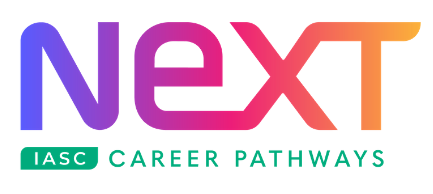IASC NEXT Career Pathways created for career connections

by Rebekah Sutherland, Herald Review
IASC NEXT Career Pathways is a program that started in 2016 to provide programming for middle and high school students. They specifically wanted to focus on a few major areas that northeast Minnesota saw high demand jobs in that sometimes had a shortage of workers.
When the program started it was through a grant from the Iron Range Resources and Rehabilitation Board with key players being Grand Rapids, Greenway, Nashwauk-Keewatin, and Itasca Campus (now MN North College).
Some of the areas that were focused on were healthcare and manufacturing.
Programming occurred and as the grant started to fade in 2018 the Blandin Foundation got involved as the major funder for the program, opening it up to all Itasca Area Schools. Today, IASC currently does not operate under Blandin funding and seeks grants to keep the program running as well as receiving money from IASC schools.
It’s all about connections
The Pathways connect what students learn in school to careers that could possibly be in their future.
Scott Patrow, IASC Director of Career Pathways said, “We want students to connect what they’re doing in school to a fulfilling career that pays them a good wage, but more importantly, matches their talent and skills and abilities with good careers.”
There are two fundamental elements in the pathway program:
Academics: Students have to earn elective credits to graduate and study.Career Connected activities: Linking what the students learn in school to careers, especially in the area, that can provide them that performance.
The program gets students thinking about their future, sometimes as early as 8th grade. They start connecting their education and exploring the career pathway before getting the degree or experiences to find out that it’s not a good fit. Or maybe the experience teaches them that it’s exactly what they want to do.
“Maybe they had this vision of what it was but they didn’t ever get an experience otherwise. That’s a really important thing in our program,” Patrow commented.
Through exploration, experience, and excelling, Next Pathways’s progression to graduate through their program leads to real career connections.
An exploration piece might be a tour or a guest speaker. Patrow said that this sometimes “sparks the light,” and gets students excited about various opportunities.
An experience is where they look to get students a little more involved. An example could be a collaborative project with a business where students are tying in their studies with real-life experience.
A real-life example is a marketing class at Grand Rapids High School that was able to meet with a new local business that moved to town. They helped design their logo. The students took what they were learning in class to bring the business’s vision to life and then they received feedback from the business.
The excel portion is the internship, where “a student is showing up at the business with responsibility and with something to do, being productive.”
The program guides look really similar to one another and the framework is the same. The requirements are based on what each school can offer. But the schools do a lot of shared programming. Patrow said the Education Pathway looks exactly the same at every school in the collaborative because it’s an asynchronous, online class.
Nextpathways.com is where to see examples of program guides or if you want to look into a program.
Why should a student complete a pathway?
Patrow said that all of the schools now have some incentive to finish a pathway: a recognition night, financial awards, advanced placements in some programs, and more.
The pathways they currently have in their program are: Autotomotive/Transportation, Business, Computer Science, Construction, Education, Healthcare, Manufacturing, and Natural Resources/Agriculture.
“I think the biggest incentive for a student is that they can feel prepared for their next step, whatever their next step is, whether it’s direct entry level work, a one or two year program, or a four year college,” Patrow said.
IASC Next Pathways prepares students to be successful.
Last year, they had 95 students complete their pathways and they identified 650 students as Pathway students in 8 high schools and 7 districts.
With over 6,000 touch points where students were completing a career connected activity like career fairs, research projects, and more, Next Pathways is certainly looking to help students prepare for their future with real-life experiences and connections.
Businesses that are interested in working with Next Career Pathways or partner with youth, can reach out to Scott Patrow at spatrow@isd6070.org or 218-256-5576




